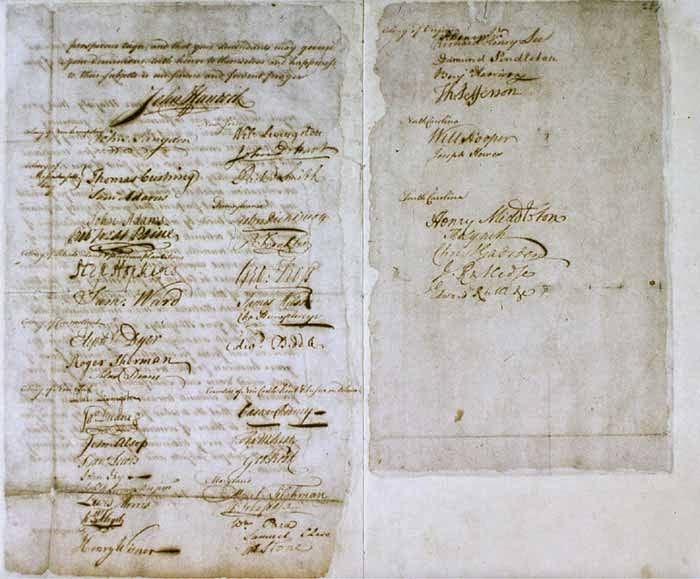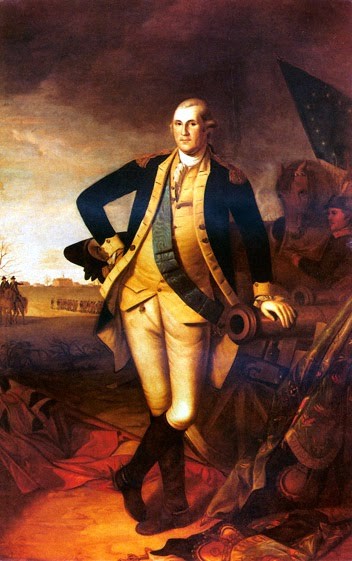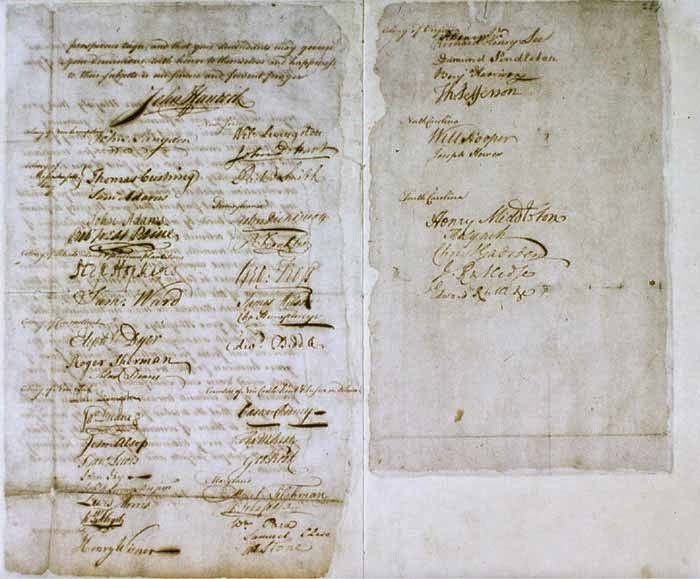Olive Branch Petition - July 5,1775
July 4, 2014

Posted by Museum Staff Member Diana Stanley
Today we celebrate the 238th anniversary of the signing of the Declaration of Independence. It was a daring and frightening move for everyone involved. After signing the document, their fate was sealed. If caught, our Founding Fathers would be branded as traitors and executed.
But what happened the year before? What led to the events on July 4, 1776? However important Independence Day is in American history, almost equally important are the events that happened in the sweltering July of the year before. On July 3, 1775 George Washington took command of the Continental Army. By this point it consisted of 17,000 rag tag group of militias who were mostly untrained and undisciplined. If the colonies went to war with England, they would be outnumbered by the best trained and equipped army in the world. Perhaps this is why, in this seemingly hopeless military situation, Congress sent King George III the Olive Branch Petition on July 5, 1775, two days after sending Washington off.
|
|
|
The Olive Branch Petition was sent to King George III in July of 1775, one year before the signing of the Declaration of Independence. |
The Olive Branch Petition was a last ditched effort at peace. It was essentially the Continental Congress’ way of saying, “Hey, King George! We have some issues we’d really like to talk to you about.” Instead of looking at the document, George refused to read it as he believed the Continental Congress had no authority. George might also have been influenced by word of the Battle of Bunker Hill in June 1775 and a pro independence letter written by John Adams that was stolen on its way to a friend. Using the letter, some argued the Petition was insincere, which is ironic because Adams was actually in the minority of Congress at the time. The Petition was instead the work of the Pro-British moderate John Dickinson. Britain now considered America in rebellion and sent more troops to take control. By the time the Crown’s official reaction to the Olive Branch Petition reached the colonies, George Washington’s troops were already in action to aid Boston, a city held by force by British troops.

In a direct way, the rejection of the Olive Branch Petition led to the events of July 4, 1775. King George alienated moderates to the side of George Washington’s command of the Continental Army, which ensured that declaring independence was more than an empty gesture. The colonies were ready to fight for their fragile new country, the United States of America.
The Museum of World Treasures is open today 10 a.m. - 5 p.m. Visit to see our "official replica" of the Declaration of Independence issued by congress. For more information please visit our website or call 316.263.1311. We do offer a military discount. Thank you for your service!

